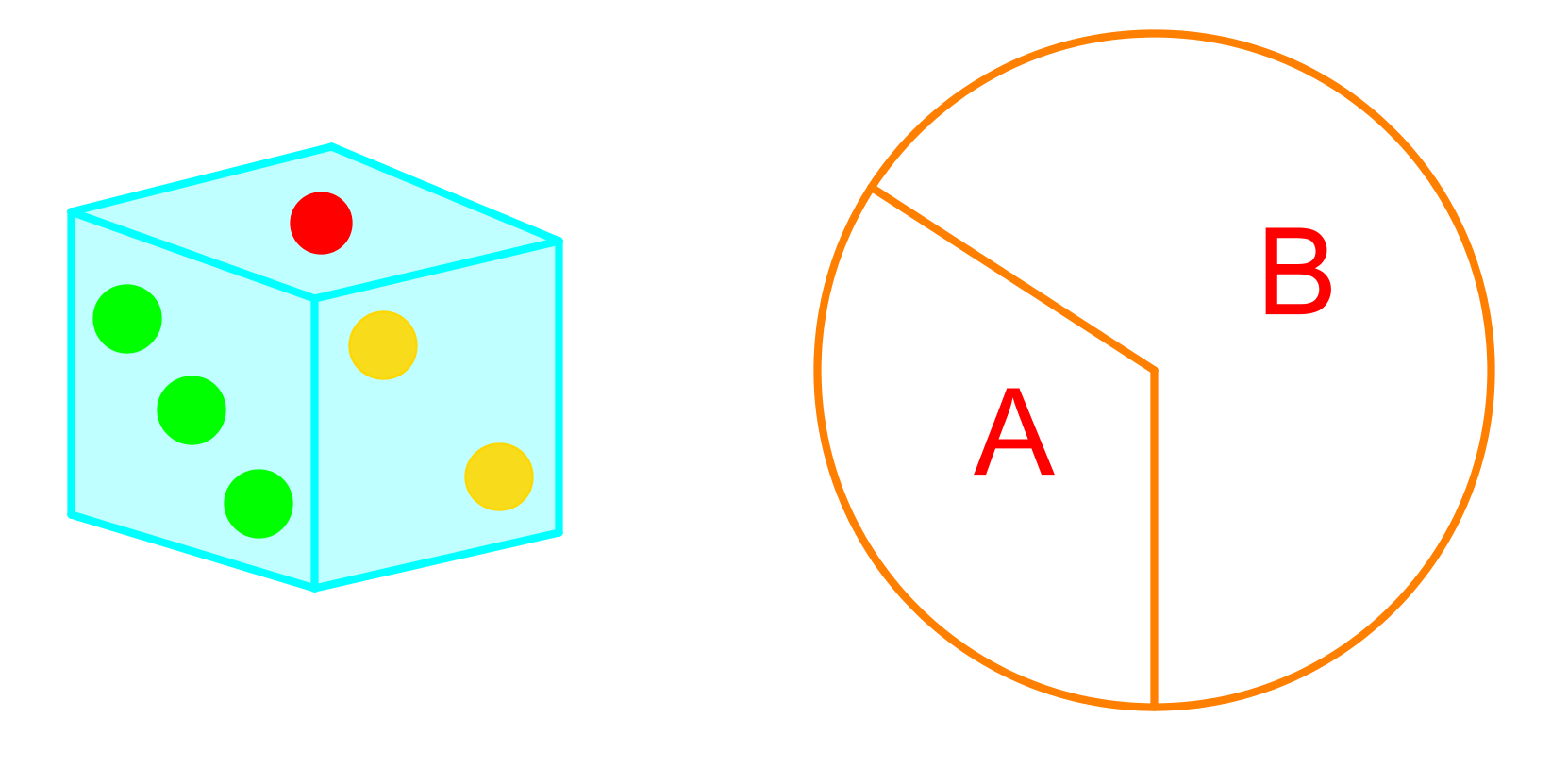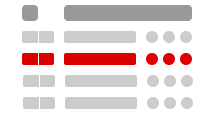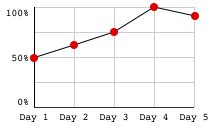Mastering Probability: Organizing Outcomes with Tree Diagrams Unlock the power of probability with our comprehensive guide on organizing outcomes. Learn to create and interpret tree diagrams, calculate probabilities, and tackle complex scenarios with confidence.
- Maggie flips a coin and then chooses one of five gobstoppers: yellow (Y), red (R), blue (B), purple (P), and green (G)

- Teresa rolls a 6-sided dice and then spins the spinner.

- John, May and Betty are in a race.
- Ian did a survey on how many computers a family owns in his neighbourhood. Below is the data he collected:
4, 2, 1, 5, 3, 3, 2, 4, 4, 2, 3, 1
Free to Join!
Easily See Your Progress
 We track the progress you've made on a topic so you know what you've done. From the course view you can easily see what topics have what and the progress you've made on them. Fill the rings to completely master that section or mouse over the icon to see more details.
We track the progress you've made on a topic so you know what you've done. From the course view you can easily see what topics have what and the progress you've made on them. Fill the rings to completely master that section or mouse over the icon to see more details.Make Use of Our Learning Aids
Earn Achievements as You Learn
 Make the most of your time as you use StudyPug to help you achieve your goals. Earn fun little badges the more you watch, practice, and use our service.
Make the most of your time as you use StudyPug to help you achieve your goals. Earn fun little badges the more you watch, practice, and use our service.Create and Customize Your Avatar
 Play with our fun little avatar builder to create and customize your own avatar on StudyPug. Choose your face, eye colour, hair colour and style, and background. Unlock more options the more you use StudyPug.
Play with our fun little avatar builder to create and customize your own avatar on StudyPug. Choose your face, eye colour, hair colour and style, and background. Unlock more options the more you use StudyPug.
Introduction to Probability and Organizing Outcomes
Welcome to our exploration of probability and organizing outcomes. This fundamental concept in mathematics plays a crucial role in various fields, from statistics to data science. Our introduction video serves as an essential starting point, providing a clear overview of the key principles. Throughout this course, we'll delve into three main topics: independent events, random events, and organizing outcomes using tables and tree diagrams. Independent events are occurrences that don't affect each other's probability, while random events involve unpredictable outcomes. Understanding how to organize these outcomes is vital for effective probability analysis. We'll learn to use tables and tree diagrams as powerful tools for visualizing and calculating probabilities. These methods help simplify complex scenarios, making it easier to identify patterns and make informed predictions. By mastering these concepts, you'll gain valuable skills applicable in real-world situations, from scientific research to everyday decision-making.
Maggie flips a coin and then chooses one of five gobstoppers: yellow (Y), red (R), blue (B), purple (P), and green (G)

Draw a tree diagram to organize the outcomes of these two events.
Step 1: Identify the First Event
The first event in this scenario is flipping a coin. A coin has two possible outcomes: heads (H) and tails (T). This will be the starting point of our tree diagram. We will draw two branches from the starting point, one for heads and one for tails.
Step 2: Identify the Second Event
The second event is choosing one of the five gobstoppers. The possible outcomes for this event are yellow (Y), red (R), blue (B), purple (P), and green (G). Each of these outcomes will branch out from both the heads and tails branches created in the first step.
Step 3: Draw the Tree Diagram
Start by drawing a single point to represent the initial state before any events have occurred. From this point, draw two branches: one labeled "H" for heads and one labeled "T" for tails.
From the end of the "H" branch, draw five more branches, each representing one of the gobstoppers: Y, R, B, P, and G. Label these branches accordingly.
Repeat the same process for the "T" branch. Draw five branches from the end of the "T" branch, each representing one of the gobstoppers: Y, R, B, P, and G. Label these branches accordingly.
Step 4: Label the Outcomes
Each path from the starting point to an endpoint represents a unique outcome. For example, the path from the starting point to "H" and then to "Y" represents the outcome "Heads and Yellow" (HY). Similarly, the path from the starting point to "T" and then to "R" represents the outcome "Tails and Red" (TR).
Continue labeling each endpoint with the corresponding outcome. You should end up with a total of 10 unique outcomes: HY, HR, HB, HP, HG, TY, TR, TB, TP, and TG.
Step 5: Review the Tree Diagram
Review the tree diagram to ensure that all possible outcomes are represented and correctly labeled. Each branch should clearly show the sequence of events leading to each outcome.
By organizing the outcomes in this manner, you can easily see all the possible combinations of events and their respective outcomes. This method is particularly useful for visualizing and understanding the sample space of more complex probability problems.
Here are some frequently asked questions about organizing outcomes and probability:
-
What is the difference between independent and dependent events in probability?
Independent events are occurrences where the outcome of one event does not affect the probability of another event. For example, flipping a coin and rolling a die are independent events. Dependent events, on the other hand, are occurrences where the outcome of one event does influence the probability of another event. For instance, drawing cards from a deck without replacement is a dependent event because each draw affects the composition of the remaining cards.
-
How do tree diagrams help in calculating probabilities?
Tree diagrams provide a visual representation of all possible outcomes in a probability scenario. They help organize outcomes systematically, making it easier to identify favorable outcomes and calculate probabilities. To use a tree diagram, you multiply probabilities along each branch to find the probability of specific outcomes, and sum these probabilities for events with multiple favorable outcomes.
-
What is the multiplication rule for independent events?
The multiplication rule for independent events states that the probability of all independent events occurring together is equal to the product of their individual probabilities. For example, if the probability of event A is P(A) and the probability of event B is P(B), and these events are independent, then the probability of both A and B occurring is P(A) × P(B).
-
How can I determine if events are independent?
Events are independent if the occurrence of one event does not affect the probability of the other event. You can test for independence by checking if P(A|B) = P(A) or if P(B|A) = P(B), where P(A|B) is the probability of A given that B has occurred. If these equalities hold true, the events are independent.
-
What are some real-world applications of probability and tree diagrams?
Probability and tree diagrams have numerous real-world applications. They are used in weather forecasting to predict the likelihood of certain weather conditions, in finance for risk assessment and investment strategies, in genetics to calculate the probability of inheriting certain traits, and in quality control to estimate the likelihood of defects in manufacturing processes. Tree diagrams are particularly useful in decision analysis, helping to map out possible outcomes of complex scenarios in business and policy-making.
Understanding the concept of "Organizing outcomes" is a crucial skill in various fields, from project management to educational planning. While there are no specific prerequisite topics listed for this subject, it's important to recognize that effective organization of outcomes often builds upon foundational knowledge and skills. These underlying concepts can significantly enhance your ability to grasp and apply the principles of organizing outcomes effectively.
Organizing outcomes is a process that involves structuring and arranging desired results or goals in a logical and coherent manner. This skill is essential for setting clear objectives, tracking progress, and ultimately achieving success in various endeavors. While it may seem like a standalone concept, it actually draws upon several fundamental areas of knowledge and practice.
One key aspect that contributes to effectively organizing outcomes is a solid understanding of goal-setting techniques. Being able to articulate clear, measurable, and achievable goals forms the backbone of any well-organized outcome structure. Additionally, familiarity with basic project management principles can provide valuable insights into how to sequence and prioritize outcomes for optimal results.
Another important element that supports the organization of outcomes is critical thinking skills. The ability to analyze complex situations, identify key components, and establish logical relationships between different elements is crucial when arranging outcomes in a meaningful way. This skill allows you to create a coherent framework that aligns with your overall objectives.
Time management is also closely related to organizing outcomes. Understanding how to allocate resources, including time, effectively can greatly enhance your ability to structure outcomes in a realistic and achievable manner. This includes skills such as prioritization, scheduling, and estimating time requirements for various tasks or milestones.
Furthermore, a basic grasp of data organization and analysis can be beneficial when dealing with outcome-based planning. Being able to collect, sort, and interpret relevant information can help you make informed decisions about how to best structure your outcomes and track progress towards their achievement.
While these topics are not explicitly listed as prerequisites, they form a strong foundation that can significantly enhance your understanding and application of organizing outcomes. By developing skills in these areas, you'll be better equipped to tackle the challenges of structuring and managing outcomes effectively in various contexts, whether in academic pursuits, professional projects, or personal goal-setting.
In conclusion, although there are no specific prerequisite topics listed for "Organizing outcomes," it's clear that a well-rounded understanding of related concepts can greatly enhance your proficiency in this area. By continually developing your skills in goal-setting, critical thinking, time management, and data organization, you'll be well-prepared to master the art of organizing outcomes and apply it successfully in various aspects of your life and work.



